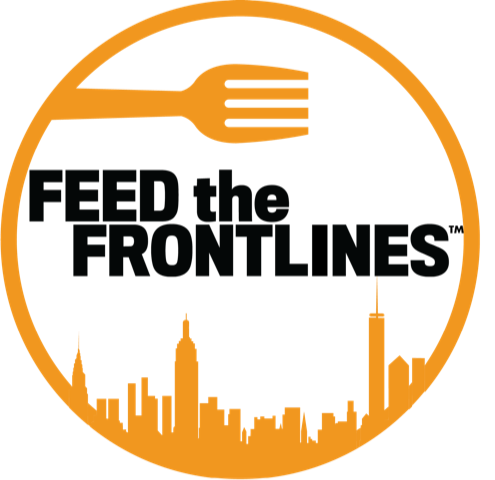The Reality of Reopening Restaurants in NYC: An Interview with Luca Di Pietro of Tarallucci e Vino
By Kanisha DiCicco
Four months ago, no one would have predicted that the city that never sleeps would be shut down overnight. On March 22nd, all non-essential businesses closed under Governor Andrew Cuomo’s “New York State on PAUSE” executive order. Now towards the end of July, life is still far from normal, especially for the restaurant industry. The streets of New York City are lined with tables and chairs as outdoor dining has become the only way to eat at local restaurants. Indoor dining was supposed to open in Phase 3 of Governor Cuomo’s reopening plan, yet as Phase 4 approaches, indoor dining is still not allowed.
Luca Di Pietro, owner of Tarallucci e Vino and co-founder of Feed the Frontlines NYC, discussed running his restaurants in the middle of a pandemic and his decision to start Feed the Frontlines NYC.
When Mayor Bill de Blasio announced in March 2020 that all restaurants had to close except for takeout and delivery, restaurant owners, including Luca, scrambled to change their menus and adapt to the new normal. Luca has multiple locations, which made the hard choice of closing multiple locations and laying off staff––many of whom were unable to receive unemployment benefits––all the more difficult.
“Unfortunately, I had to close four of my five restaurants within a week [of Mayor de Blasio’s order] because business was not there. My Upper West Side location stayed open, but I had to furlough over 90% of my staff— about 95 people,” Luca explained.
Feed the Frontlines NYC was founded on March 21, as New York was shifting into crisis mode. At the time, New York City was considered the epicenter of the COVID-19 pandemic. Available hospital beds diminished rapidly, spurring the overnight construction of a hospital in Central Park and the arrival of a Naval hospital ship in New York Harbor. Two days after the mayor’s announcement on March 15 that all New York City restaurants and bars would close except for take-out and deliveries, the Di Pietro family received a message from a family friend asking how she could help the family’s restaurant and New York City healthcare workers on the frontlines of the pandemic. She ordered 40 dinners from Tarallucci e Vino to be delivered to NYU Langone Tisch’s emergency department. That first delivery planted the idea for Feed the Frontlines NYC. Over that first month, as more generous contributors bought meals for NYC first responders, Luca was able to rehire half of Tarallucci e Vino’s staff. “We were able to keep the lights on because of Feed the Frontlines,” Luca said. To date, Feed the Frontlines NYC, and 31 restaurant partners, have delivered over 130,000 meals to frontline workers and those facing food insecurity.
Even now, as Governor Cuomo has allowed NYC restaurants to reopen for outdoor dining, restaurants are far from operating as usual. And, as Luca reports, when the city released guidelines for reopening, restaurants had to react quickly.
“It was very tough, very tough,” Luca said. “We adapted pretty quickly because we knew some businesses was better than having no business at all. And, we have tried to comply with the guidelines of the city and the Department of Transportation in particular. It would have been much better if we had known in advance, before reopening, what was going to be asked of us.”
In addition to the expected up-front costs associated with new safety protocols - including disposable menus and additional cleaning supplies - restaurants like Tarallucci e Vino that expanded outdoor seating into parking spaces spent thousands of dollars building 18 x 30 x 36 inch traffic barriers retroactively required by the Department of Transportation. Restaurants that had been closed for months were now asked to spend more money just to reopen.
At the same time, many New Yorkers moved out of the city for all or parts of the summer just as tourism has ground to a halt due to the pandemic. Fluctuations in weather - from scorching 90+ degree days to torrential downpours - can also cause the number of customers utilizing outdoor dining to nosedive without warning.
Meanwhile, the pandemic’s toll has both deepened and brought to light the systemic racial and socioeconomic disparities in health care access. Luca hopes that New York City will come to activate the untapped potential in the restaurant industry to help communities around the city.
“We know a lot about our neighborhoods, and we can be an integral part of the revival of this great city of ours. So let's not forget about restaurants and let's not forget about New York City.”
He believes that state, local, and federal governments should take steps to help restaurants help their communities. Luca envisions a world where restaurants will continue to help produce and deliver high-quality food to those facing food insecurity, as Feed the Frontlines NYC has enabled its restaurant partners to do. The unfortunate truth is that many small businesses and restaurants will go out of business. According to the Independent Restaurant Coalition, 85% of independent restaurants could permanently close nationwide. But, as Luca says, “You can’t be a restaurant owner if you’re not an optimist.”
In order to continue supporting local restaurants and building a world where restaurants have a sustained role in fighting food insecurity, Feed the Frontlines NYC needs your help. Visit our website today to donate and buy meals for those in need.
